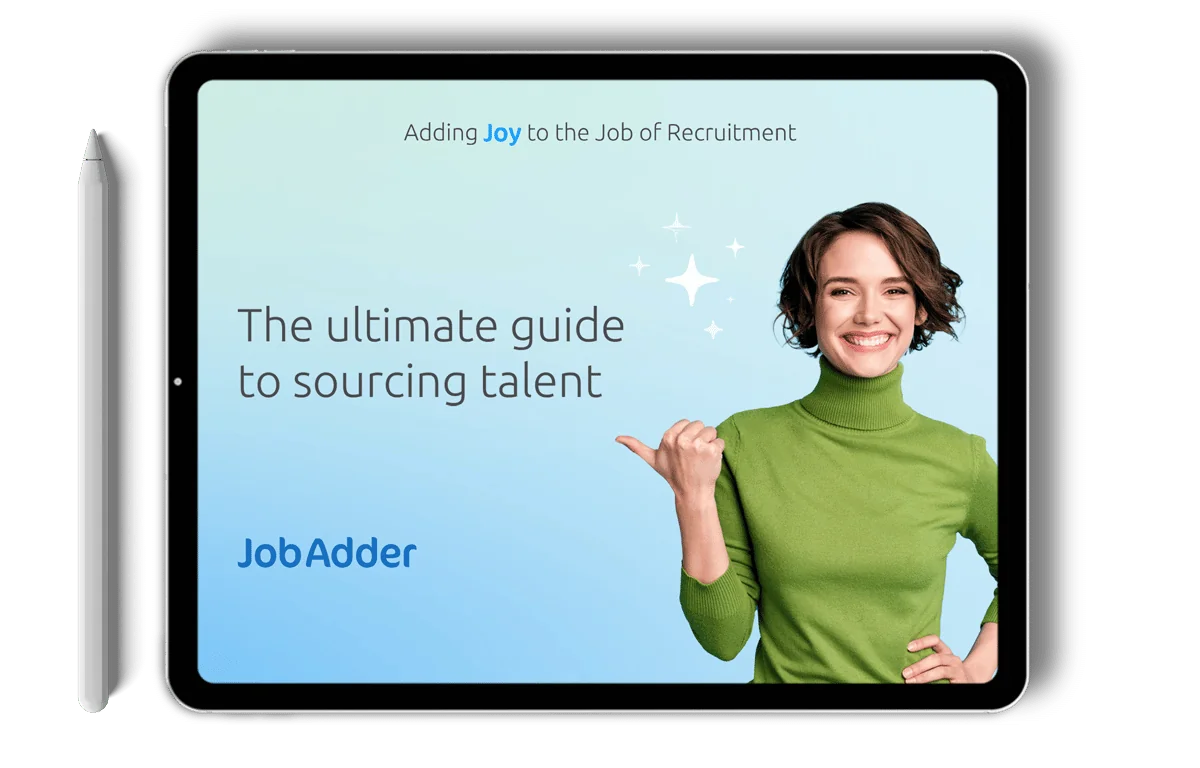Recruitment Blog
What your hiring process needs in 2023

The potential of a company is often determined by its employees. Without dedicated, hardworking and competent employees, a company’s efficiency will undoubtedly plummet. This is why the recruitment process and hiring process is so vital.
For a 101 explainer, the hiring process is a series of steps through which a company plans for, searches, evaluates and ultimately hires a new employee.
When looking for new employees, there are key factors that help determine which candidates are most suited for your workplace.
A thorough, organised, efficient hiring process is a crucial component of your long-term health and success as a company, so getting these factors and processes right is critical. Keep on reading to discover what your hiring process needs in 2023.
FREE DOWNLOAD: The ultimate guide to sourcing talent
Do you need a hiring process?
Here, we’re doing to delve in a bit deeper. The hiring process is a series of methodical, replicable steps and procedures that will help determine the best talent for a specific position.
The first step in the recruitment process is identifying a need for a new role at a company, or additional help in the same role, and ends in onboarding a new hire.
The best course of action is to evaluate the company’s performance and see which areas need extra attention and resources.
Once you pinpoint which positions you need to hire for, it’s time to formulate a hiring process. The process should be a well-thought-out approach that seeks out the most suitable, experienced candidates while remaining unbiased to personal opinions or baseless gut feelings.
The new hire should be a qualified individual who has a relevant skill set, brings long-term value and fits nicely into your company’s work culture.
Additionally, it should be noted that an efficient and organised hiring process also improves the experiences of candidates, which helps you attract top talent, as well as keep qualified candidates engaged throughout the entire process.
A step-by-step guide to the hiring process
There are five primary stages to the recruitment process:
- Opening the job position
- Evaluating applications
- Interviewing
- Hiring decision
- The job offer
These stages are broken up into 12 distinct steps listed below.
Keeping the hiring process organised and methodical is key to success. Pay close attention to each step and adjust as necessary.
Remember, different businesses have different needs, and not every application process will be the same.
Here are 12 distinct steps of the hiring process:
- Identify hiring needs
It would be best if you only opened new job positions when necessary. Conduct a series of evaluations to determine your company’s hiring needs.
- Define the role
You should explicitly define new roles in the company. Specificity will help you find the best fit for the position.
- Plan your recruitment strategy
Make sure to plan everything out, from promoting the position to conducting interviews. It all plays an imperative part in the process, and there should be no stone left unturned.
- Write a job ad
The job description lets potential applicants know everything they need to know about the open position.
This informs prospective hires about what they should include in their job application, such as job requirements, a cover letter and any examples of previous work.
- Advertise
You should advertise the position to have the largest pool of qualified applicants. Job posting on social media and through sites such as LinkedIn is a great way to attract candidates.
If your company website has a moderate amount of traffic, then including a careers page may also prove to be beneficial.
- Applicant screening
Applicant screening is an integral part of the selection process because it helps dictate the eligibility of each applicant and whittles down how many you’ll evaluate at a more in-depth level.
- Interviews
Once you have a group of qualified individuals, it’s time to conduct some job interviews. The interview will give a more comprehensive look into a person’s character and determine their cultural fit in the company. These interviews can be phone interviews, video interviews or in-person interviews.
- Candidate evaluation
One person shouldn’t handle the candidate evaluation: it should be a cumulative decision based on the opinions of current employees and a certified hiring team.
- Assessments, background checks and reference checks
Checking candidates’ legitimacy through a series of background checks, assessments and reference checks helps eliminate fraudulent applicants. This is so your company doesn’t hire underqualified individuals.
- Candidate selection
Once you’ve determined the most favourable candidates for the position, it’s time to make a decision. This decision will result from the cumulative efforts of every preceding step in the hiring process.
- Job offers
After you have selected a candidate(s) to hire, the next step is to reach out to them with a stellar job offer. You should make offers promptly to avoid losing the best potential talent. The job offer letter should congratulate them and detail the offer.
- Onboarding
The final step is onboarding. Onboarding begins on the new employee’s first day and is essential for integrating them into the company’s work culture.
Need help building your talent pool? Download our ultimate guide to sourcing talent.

Attract the best candidates in 2023: Where to focus efforts during the hiring process
As the world comes out of a pandemic that was detrimental to the workforce, the necessity of a people-oriented, proactive hiring process is apparent now more than ever.
In order to make the most out of the recruitment process and onboard the most proficient candidates, you should pay special attention to these aspects:
Follow-up with potential candidates
The company’s interest in qualified candidates is just as important as the candidate’s interest in the company. You should always send follow-ups to applicants and promote candidate engagement.
Candidate engagement is the continual association between the company and candidates during the evaluation process. This keeps the best talent interested in your company and provides a more extensive view of specific candidates.
Build your talent pool
The talent pool refers to your database of promising candidates. Creating a talent pool of qualified individuals helps to drastically cut down the time you spend on the hiring process. By searching your talent pool to source candidates, you can identify which candidates are best suited for any job you’re looking to fill.
A candidate relationship management (CRM) system or Applicant Tracking System are tools that help create and maintain relationships with prospective job seekers, it’s where you can build and nurture your talent pool, as well as organise your hiring process.
Streamline your application process
Streamlining refers to simplifying certain functions to make them more efficient and work faster. Lengthy application processes can be time-consuming for both candidates and your company. Streamlining certain aspects of the process may prove beneficial when going through application forms.
In your Applicant Tracking System, you can store candidate resumes and simplify the initial screening process by using artificial intelligence and skill matching to search for qualified candidates. This will cut out inexperienced applicants and save you the time it would take to go through each application manually.
Make the most out of the interview
The interview process will allow your company to get an in-depth look into a specific candidate. Interviews don’t typically take very long, so it’s vital to efficiently utilise the time you have.
Create a group set of unique interview questions that adhere to the company’s principles and needs. Stay away from generic, standardised questions.
You should also prioritise making the interviewing process as fast as possible. This will prevent the best candidates from accepting other job offers.
Efficiency is key
The most qualified candidates won’t be on the market for long, so it’s essential to keep the application process as fast and efficient as possible.
Transform your hiring process with JobAdder
Your hiring process can play a pivotal role in your company’s future. Remember the 12 steps of the hiring process and streamline wherever possible to create the most qualified talent pool. Do interviews as soon as possible and consistently engage with candidates. If you plan efficiently, then you won’t regret missing any big opportunities.
Need help with streamlining your hiring process? JobAdder can help you manage and organise your company’s recruitment needs through cutting-edge software. Optimise your talent search with JobAdder now.
Related blog posts

To excel in the competition for top talent, proactive workforce planning is essential. Traditional methods struggle to adapt to evolving …
Ready to get started?
Talk to one of our friendly team members


